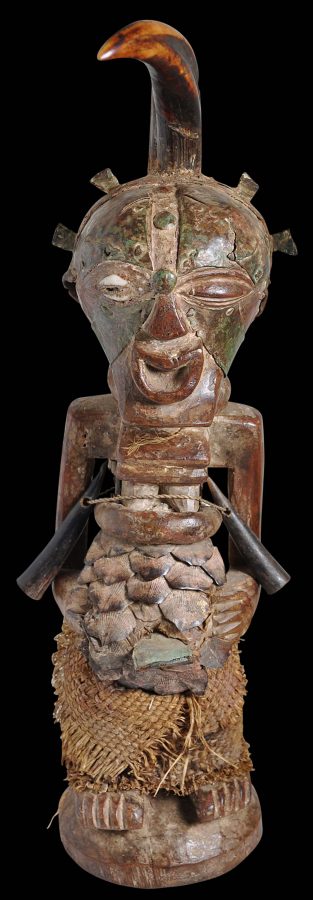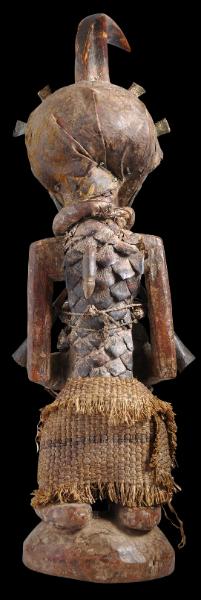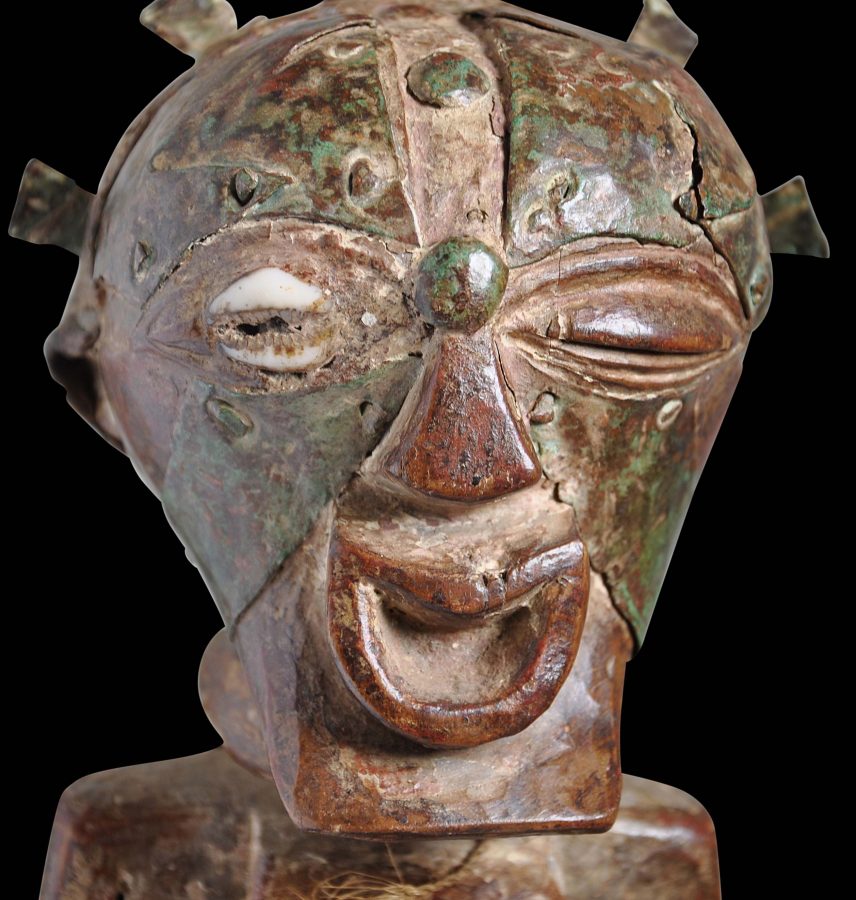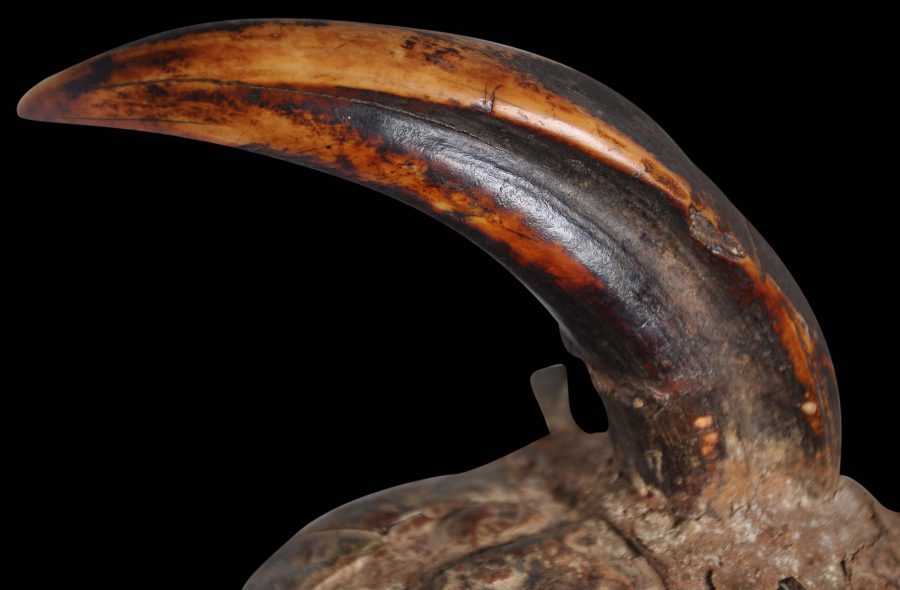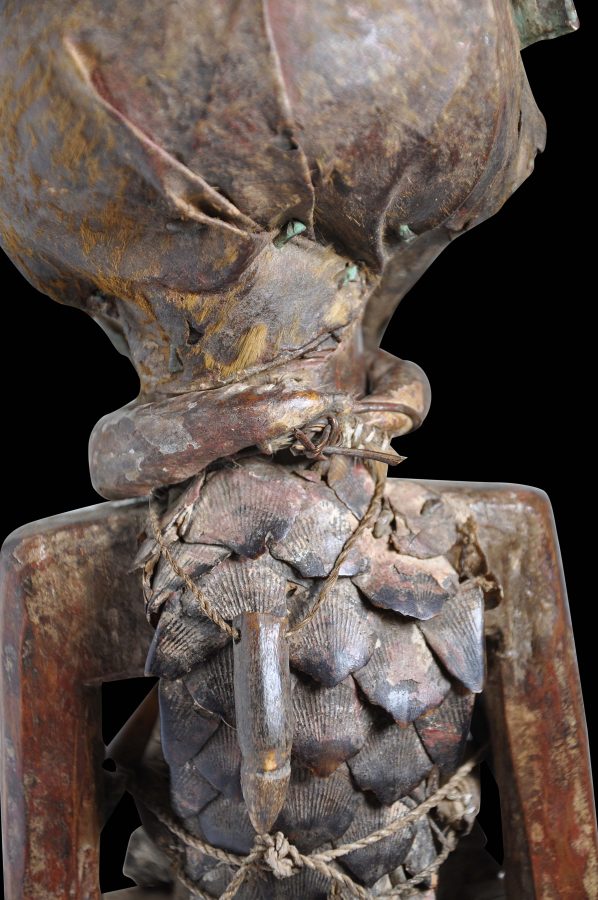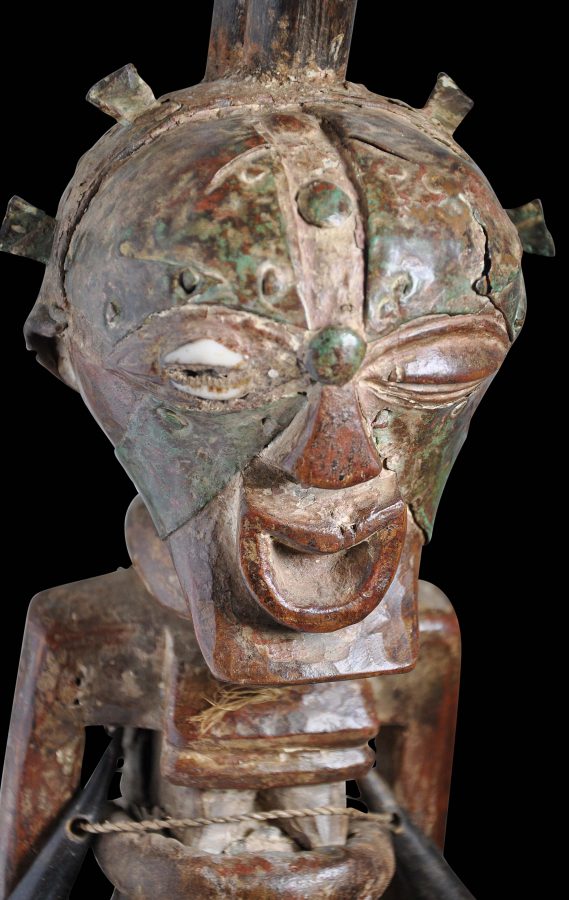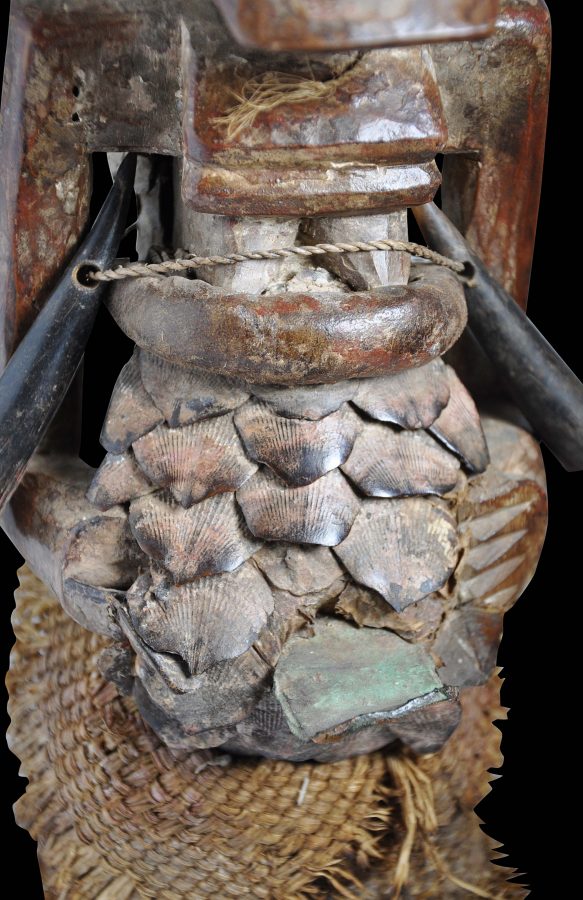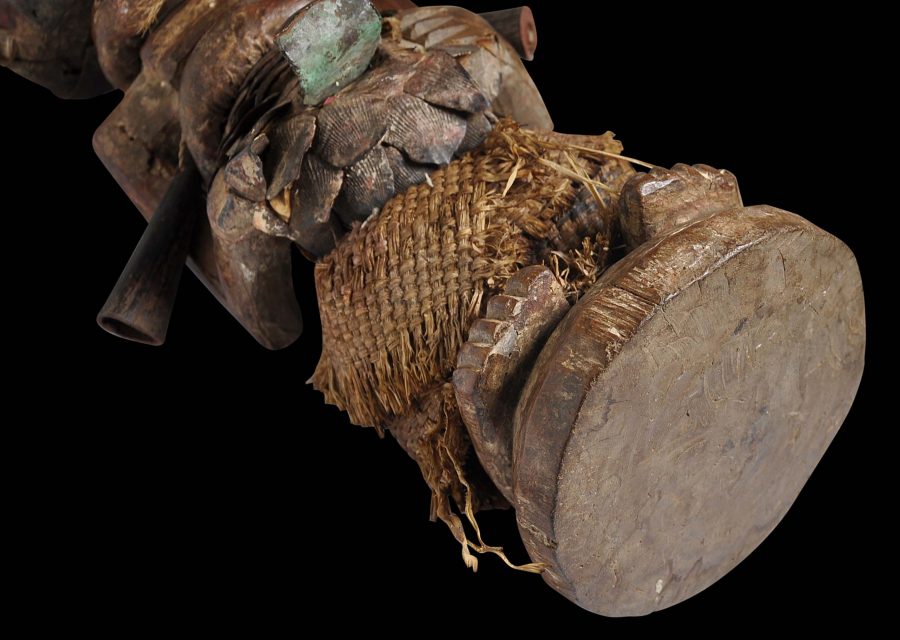Enquiry about object: 3105
Songye Androgynous Power Figure
Songye People, Congo circa 1900
height: 48.5cm
Provenance
acquired from the estate of Dr Peter Sharratt (d. 2014). Sharratt was a linguist and lecturer in the School of Literatures, Languages and Cultures at the University of Edinburgh who published on Renaissance French sculpture. In his private life, he was an avid collector of tribal art, building up his collection over fifty years. It is not known when or how Dr Sharratt acquired this figure but during his fifty years of collecting, he tended to acquire from within the UK only from dealers, collectors and auction houses.
This fine Songye power figure (nkisi) is of carved wood and has been embellished with a Duiker antelope horn, metal sheet, plaques and studs; cow hide, reed matting, and pangolin scales. The pangolin scales are one of the most distinctive features of this piece. Neyt (2009, p. 352) comments that such scales are part of the repertoire of materials used to decorate such figures but that it is rare. (See lot 139, Sotheby’s ‘Important Tribal Art’, London, July 2, 1990 for an example that also employs pangolin scales.)
Such figures were used by the Songye people of the Congo as protective devices to ward off enemies from individual households and villages, and to bring fertility and wealth. Such statues were seen as being imbued with magical energy and were used only by village sharmans. Larger images were to protect whole villages. Smaller examples such as the example here were for individual use.
The figure is carved with a typical ovoid head with a square, jutting jaw; a wide, opened mouth with under-hung lips; a sagittate-shaped nose; and large almond-shaped eyes, one of which is inset with a cowrie and the other being fully carved. The shoulders are square and the arms are elongated. Unusual carved folds fall from the neck beneath which a pair of breasts can be seen. The feet are long and over-sized and stand a rounded plinth; they are fully enunciated from the plinth and jut out beyond it.
The head is decorated with bands of hammered copper sheet, tacks and metal plaques. The back of the head is tightly bound in animal hide or skin which seems to have had fur but this has now largely worn away. A smoothed reedbuck antelope horn with a superb reddish patina protrudes from the head. Typically, magical material was packed inside such horns before installation.
A ring of stuffed hide encircles the neck and another encircles the upper abdomen. The chest and back are covered with pangolin skin and a prominent metal plaque protrudes from the umbilical area. Two smaller Duiker antelope horns are suspended from around the upper chest and a small, single claw is suspended form the back.
Each element of this figure has age, wear and varied patina. There is varying encrustation about the head and face. The pangolin scales (from the tree pangolin – Phataginus tricuspis – which is native to the Congo listed in CITES Appendix I; Duiker antelope is not listed) have developed smoothness from ritual handling and age. The metal used in the piece has developed varying wear and degradation. Overall, it is a fine example in good, stable condition and with obvious, significant age. (The wood is Okuoume wood – Aucoumea klaineana – a non-CITES listed species.)
References
Celenko, T., A Treasury of African Art from the Harrison Eiteljorg Collection, Indiana University Press, 1983.
Neyt, F., Songye, Prestel, 2009.
Petridis, C., et al., Fragments of the Invisible: The Rene and Odette Delenne Collection of Congo Sculpture, Cleveland Museum of Art/5 Continents, 2013.




